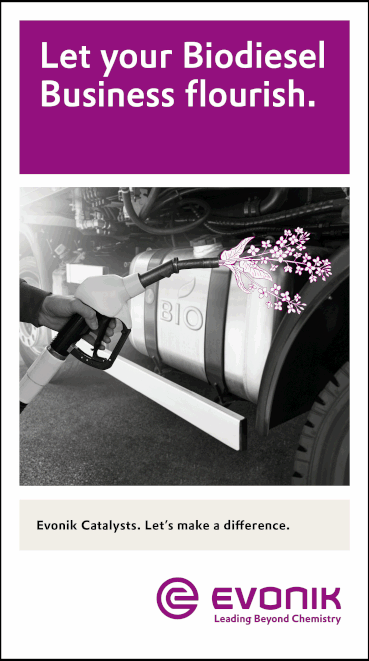US EPA dismisses benefits of biobased diesel in Phase 3 GHG standards for heavy-duty vehicles
- Ron Kotrba
- Mar 29, 2024
- 3 min read
Updated: Jun 19, 2024

The U.S. EPA announced March 29 final national greenhouse-gas (GHG) pollution standards for heavy-duty vehicles, such as freight trucks and buses, for model years 2027 through 2032.
According to EPA, the standards will avoid 1 billion tons of GHG emissions.
Trucks and other heavy-duty vehicles are vital to the U.S. economy but account for 25 percent of all GHG emissions from the transportation sector, which is itself the single largest source of greenhouse gas emissions in the U.S.
The Phase 3 standards build on EPA’s heavy-duty Phase 2 program from 2016 “and maintain that program’s flexible structure, which is designed to reflect the diverse nature of the heavy-duty vehicle industry,” the agency stated. “The standards are technology-neutral and performance-based, allowing each manufacturer to choose what set of emissions-control technologies is best suited for them and the needs of their customers. Available technologies include advanced internal-combustion engine vehicles, hybrid vehicles, plug-in hybrid electric vehicles, battery electric vehicles, and hydrogen fuel cell vehicles. These new standards apply to heavy-duty vocational vehicles and tractors (such as day cabs and sleeper cabs on tractor-trailer trucks).”
Clean Fuels Alliance America expressed extreme disappointment in the standards.
“In the rule, EPA adopts new standards that are designed expressly to incentivize electric vehicles for model year 2027-2032 heavy-duty vehicles,” Clean Fuels stated. “EPA did not evaluate use of biodiesel and renewable diesel as part of engine systems to meet the new standards, focusing primarily on tailpipe emissions. However, the agency considered a range of alternative fuel and engine configurations, such as natural gas and hydrogen. EPA did recognize that equipment makers will continue to have the option to use biodiesel and renewable in their compliance strategies.”
Kurt Kovarik, vice president of federal affairs with Clean Fuels, said, “EPA’s rule flatly dismisses the benefits of biodiesel and renewable diesel as the lowest-cost and most widely available options to kickstart decarbonization of the heavy-duty vehicle sector. There should be no uncertainty that biodiesel and renewable diesel also reduce criteria pollutants from heavy-duty vehicles, which will continue to be manufactured and used during the timeframe of this rule. EPA should recognize that biodiesel and renewable diesel merit a role in meeting these emission standards for heavy-duty vehicles.”
Allen Schaeffer, executive director of the Engine Technology Forum, said the challenging new standards require truck makers to convert an increasing percentage of total vehicle sales each year to zero-emission vehicles.
“The trucking industry is already a substantial contributor to lowering GHG and other emissions from investing in new ultra-clean heavy-duty trucks and using renewable low-carbon renewable biofuels including biodiesel, renewable diesel and renewable natural gas,” he said. “In recent years, more GHG reductions in California have come from the use of renewable biodiesel fuels in diesel trucks than from vehicle electrification. In a study of 10 northeastern states, it was determined that over the next decade switching to renewable diesel fuel and accelerating the turnover of the oldest diesel trucks to the newest generation of diesels would achieve three times the GHG reductions at 25 percent of the cost of a full zero-emission (electric) vehicle option.”
Schaeffer noted that diesel engines power more than three-quarters of all commercial trucks today. Of the largest tractor-trailer size rigs, diesel powers 97 percent of the fleet. More than 57 percent of all commercial trucks in operation are outfitted with the newest generation of ultra-clean, near-zero emissions, advanced diesel technology.
“Diesel is the established and dominant technology for trucking,” Schaeffer said. “Its unique combination of affordability, performance, driving range, durability and reliability is unmatched. Internal-combustion engines’ ease of fueling, parts and servicing nationwide, high resale value, ability to use renewable biobased diesel fuels, and its near-zero emissions performance also make it the leading choice for fleets and drivers. The EPA envisions that the rule can be met with a diverse range of technologies, including advanced internal-combustion engine vehicles, hybrid vehicles, plug-in hybrid electric vehicles, battery electric vehicles, and hydrogen fuel-cell vehicles. Ideally, the EPA rules would be based on lifecycle-GHG emissions rather than a tailpipe-only basis. A lifecycle approach supports consumer choice for both fuels and vehicles. There are many paths to reducing carbon and other emissions including further advancements to internal-combustion engines and the use of renewable fuels, and new fuels like hydrogen. We envision a future where truckers can choose whatever technology best suits their needs.”
The final rule and more information can be found here.

























-RKstandin.jpg)





